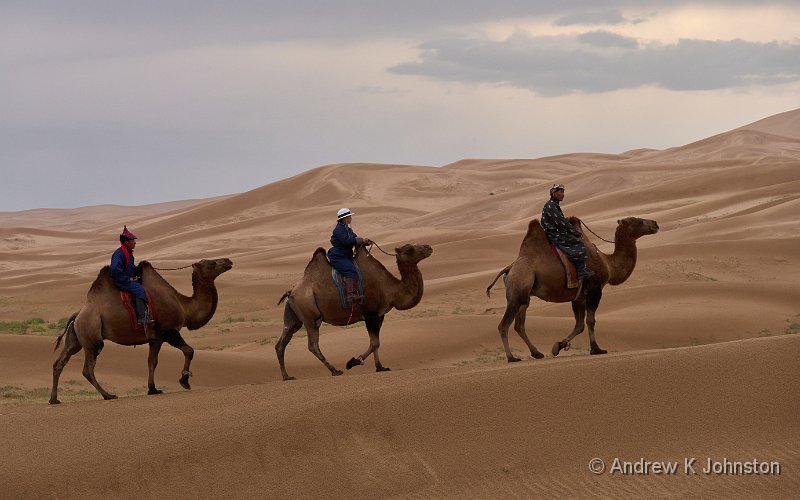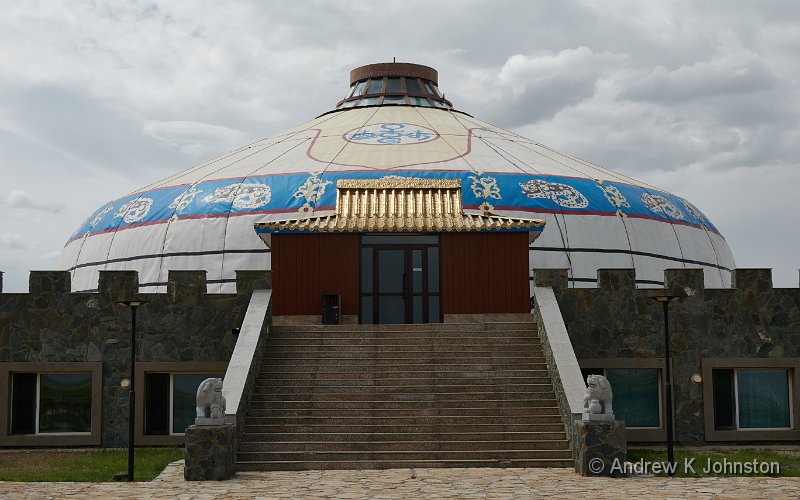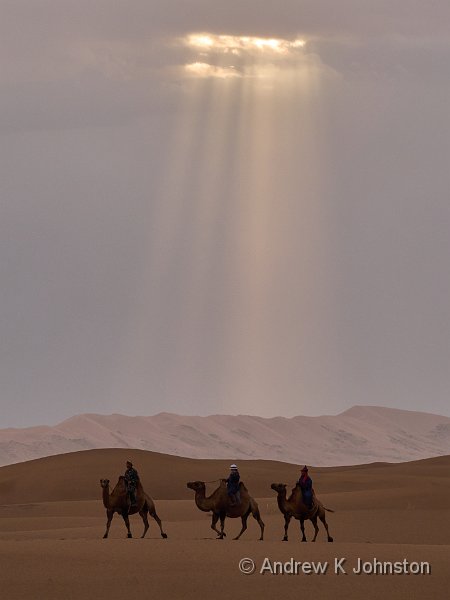
| Camels on the Khongor Dunes | |
| Camera: Panasonic DC-G9M2 | Date: 26-07-2025 19:23 | Resolution: 5525 x 3453 | ISO: 500 | Exp. bias: -33/100 EV | Exp. Time: 1/250s | Aperture: 7.1 | Focal Length: 100.0mm (~207.0mm) | Location: Hongorïn Els | State/Province: Saynshand, Ömnögovĭ | See map | Lens: LUMIX G VARIO 35-100/F2.8II | |
Day 3 is mainly a long drive south, to not far off the Chinese border. Thanks to the emergency replan this is a bit longer than expected, and we’ll also have a slightly longer drive back on day 5 returning to Ulaanbaatar from a more southerly site, but at least Mongolia has maintained its reputation for hospitality and kept a roof over our heads each night!
The main road south varies dramatically in quality and condition from place to place. After, say, 10 miles driving uninterrupted at UK motorway speeds you reach a section where the drivers have to pick their way around potholes almost deep enough to swallow a Land Cruiser. We make good time, but perhaps still less than the original plan allowed for.
Lunch is taken at the rather magnificent Grand Gobi Resort in Dalandzadgad. This combination of hotel, restaurant and night-club is styled like an enormous ger, but inside dominated by a statue of Genghis Khan. The food is good, but the portions are ridiculous. After a hefty salad with camel meat which most of us assumed was "it", we are each presented with a plate of 6 meat-filled pastries (think Cornish Pasty or empanada). One might have worked, two would have been generous, three covering absolutely all bases… We’re all sad to see so much food go back to the kitchen, but the heartiest trencherman amongst us manages 3 1/2.

| Grand Gobi at Dalanzadgad (Show Details) |
The statue of Genghis Khan highlights an interesting problem. Most countries and their areas/cities can call upon a number of recognised cultural or historical figures to represent their image. Sometimes, as in Cuba in 2010, there is a conscious decision to limit things to a few chosen public figures. (They chose to iconise Fidel, Raoul and Che, but could have chosen from a range of musicians, sportsmen and gangsters!) However Mongolia’s interaction with the outside world is dominated by a certain 13th century warlord, and the outside world have few other references. He therefore dominates their imagery, but hopefully as Mongolia proceeds to make its own way outside the shadow of the Soviet Union we will start to recognise, and they will start to use, some other characters.
After lunch we head west from Dalandzadgad. The first 200km is on a very good new road and dispatched quickly, but then we turn off the surfaced road and head due north across country, through an impressive mountain valley, and reach the end of the Khongor sand dunes.
Before we reach the camp, we’re intercepted by a group of camel herders, who have been pressed into service to model for us as we photograph the camels and dunes. The sky is quite cloudy, providing less than ideal light to capture the dramatic scenery, but good light in which to do portraits of the herders and their animals.

| Camels on the Khongor Dunes (Show Details) |
After the shoot we do the final few miles to the Gobi Erdene camp. We’re each accommodated in a log cabin which is superficially attractive but scores very high on my Dysfunctional Hotel Room Design Index. [Update: the room not only scores a massive, unprecedented, 68 points, but has contributed 4 new categories!] Highlights include a single power socket positioned between the main and bathroom doors, but nowhere near any other surface, intermittent power which goes off during the night so nothing has charged, and a tap which is not actually screwed into the sink! Not impressed.
 Thoughts on the World (Main Feed)
Thoughts on the World (Main Feed) Main feed (direct XML)
Main feed (direct XML)
Pingback: Oyu